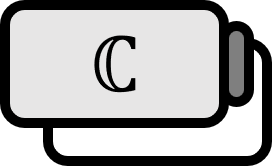Joukowsky Transformation
Definition 1

Let’s assume $\displaystyle w = f(z) = a z + {{b} \over {z}}$. If $a=b$, then $f$ is called the Joukowski Transform, which maps a circle not centered at $0$ to an airfoil shape.
- [1]: $f$ maps a circle centered at $0$ to an ellipse.
- [2]: $f$ maps a semi-infinite line starting from $0$ to a hyperbola.
Explanation
Zhukovsky is a Soviet physicist who made contributions in the fields of aerodynamics, among others. The fact that airplane wing sections can be mapped to circles means that problems in aerodynamics can be solved using complex analysis.
Proof
[1]
Given $z= r e^{i \theta}, w = u + iv$, $$ u = ar \cos \theta + {{b} \over {r}} \cos \theta = \left( ar + {{b} \over {r}} \right) \cos \theta \\ v = ar \sin \theta - {{b} \over {r}} \sin \theta = \left( ar - {{b} \over {r}} \right) \sin \theta $$
Setting $\displaystyle p := ar + {{b} \over {r}}, q := ar - {{b} \over {r}}$, $$ {{u} \over {p}} = \cos \theta \\ \displaystyle {{v} \over {q}} = \sin \theta $$ Then, $$ {{u^2} \over {p^2}} + {{v^2} \over {q^2}} = 1 $$ If $r$ is taken as a constant, $f$ maps the circle $|z| = r$ into an ellipse.
■
[2]
Given $z= r e^{i \theta}, w = u + iv$, $$ u = ar \cos \theta + {{b} \over {r}} \cos \theta = \left( ar + {{b} \over {r}} \right) \cos \theta \\ \displaystyle v = ar \sin \theta - {{b} \over {r}} \sin \theta = \left( ar - {{b} \over {r}} \right) \sin \theta $$ Meanwhile, $$ {{u} \over { \cos \theta }} = ar + {{b} \over {r}} \\ \displaystyle {{v} \over { \sin \theta }} = ar - {{b} \over {r}} $$ Therefore, $$ {{u^2} \over { \cos^2 \theta }} - {{v^2} \over {\sin^2 \theta }} = 4ab $$ If $\theta$ is taken as a constant, $f$ maps the semi-infinite line making an angle of size $\theta$ with the $x$ axis into a hyperbola.
■
Osborne (1999). Complex variables and their applications: p215~216. ↩︎
